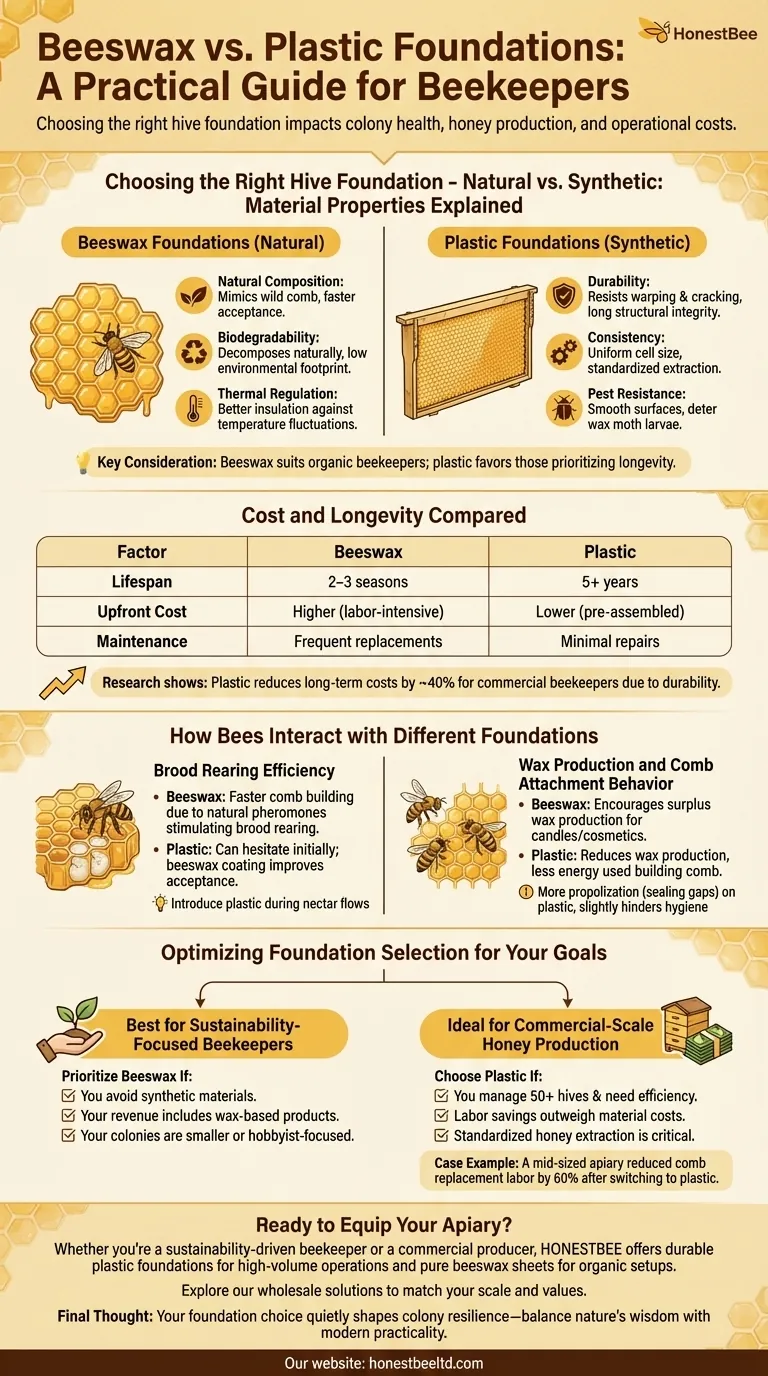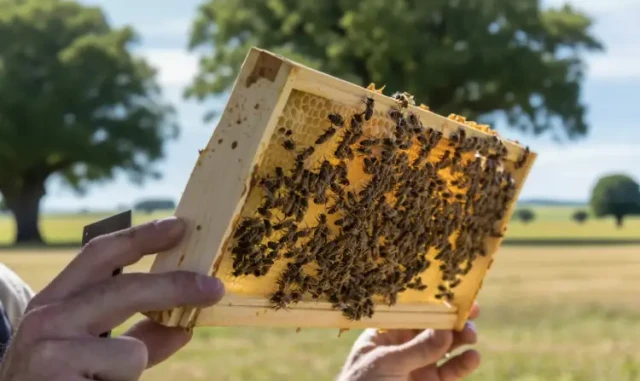Choosing the right hive foundation impacts colony health, honey production efficiency, and long-term operational costs. This guide compares beeswax and plastic foundations across durability, bee behavior, and sustainability—helping you align your choice with your beekeeping goals.
Choosing the Right Hive Foundation
Natural vs. Synthetic: Material Properties Explained
Beeswax Foundations
- Natural Composition: Made from secreted beeswax, these foundations mimic wild comb structures, encouraging faster colony acceptance.
- Biodegradability: Decomposes naturally, reducing environmental footprint.
- Thermal Regulation: Beeswax insulates better against temperature fluctuations.
Plastic Foundations
- Durability: Resists warping and cracking, maintaining structural integrity for years.
- Consistency: Uniform cell size aids standardized honey extraction.
- Pest Resistance: Smooth surfaces may deter wax moth larvae attachment.
Key Consideration: Beeswax suits organic beekeepers; plastic favors those prioritizing longevity.
Cost and Longevity Compared
| Factor | Beeswax | Plastic |
|---|---|---|
| Lifespan | 2–3 seasons | 5+ years |
| Upfront Cost | Higher (labor-intensive) | Lower (pre-assembled) |
| Maintenance | Frequent replacements | Minimal repairs |
Research shows: Plastic reduces long-term costs by ~40% for commercial beekeepers due to durability.
How Bees Interact with Different Foundations
Brood Rearing Efficiency by Type
- Beeswax: Colonies often build comb faster on natural wax, as it emits pheromones that stimulate brood rearing.
- Plastic: Some colonies hesitate to draw comb initially but adapt over time. Coating plastic with beeswax improves acceptance.
Tip: For new hives, introduce plastic foundations during nectar flows when bees are more comb-building active.
Wax Production and Comb Attachment Behavior
- Beeswax Foundations: Encourage bees to produce surplus wax, beneficial for candle or cosmetic byproducts.
- Plastic Foundations: Reduce wax production since bees spend less energy building comb.
Observation: Bees propolize (seal gaps) more heavily on plastic, which may slightly hinder hive hygiene.
Optimizing Foundation Selection for Your Goals
Best for Sustainability-Focused Beekeepers
-
Prioritize Beeswax If:
- You avoid synthetic materials.
- Your revenue includes wax-based products.
- Your colonies are smaller or hobbyist-focused.
Ideal for Commercial-Scale Honey Production
-
Choose Plastic If:
- You manage 50+ hives and need efficiency.
- Labor savings outweigh material costs.
- Standardized honey extraction is critical.
Case Example: A mid-sized apiary reduced comb replacement labor by 60% after switching to plastic.
Ready to Equip Your Apiary?
Whether you’re a sustainability-driven beekeeper or a commercial producer, HONESTBEE offers durable plastic foundations for high-volume operations and pure beeswax sheets for organic setups. Explore our wholesale solutions to match your scale and values.
Final Thought: Your foundation choice quietly shapes colony resilience—balance nature’s wisdom with modern practicality.
Visual Guide

Related Products
- Beeswax Foundation Sheets Beehive Foundation for Wholesale
- Food Grade Plastic bee Foundation for Bee Frames
- Manual Beeswax Comb Foundation Machine Wax Foundation Mill Embossing Machine
- Professional Frame Preparation: The HONESTBEE Electric Wire Embedder
- HONESTBEE Professional Long Handled Hive Tool with Precision Cutting Blade
Related Articles
- Chaos and Order: The Strategic Value of Beeswax Foundation
- Why Your Beeswax Foundation Fails: A Guide to Preventing Costly Warping and Breakage
- Tired of Sagging Comb? The Hidden Cost of "Cheap" Beekeeping Frames
- Plastic vs. Beeswax Foundations: What Beekeepers Need to Know for Sustainable Hives
- The Pragmatic Hive: Engineering Resilience with Wood Frames and Plastic Foundation




















